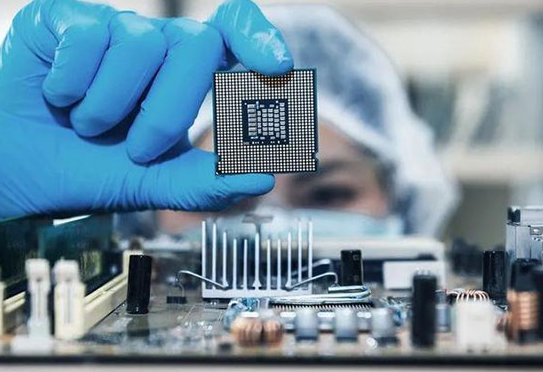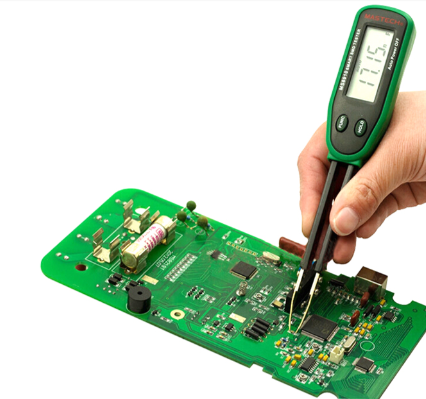What is the Difference Between Original and Non-Original Electronic Components?
Introduction
In the rapidly evolving electronics industry, the distinction between original and non-original electronic components has become a critical consideration for manufacturers, engineers, and procurement specialists. With global supply chain complexities and cost pressures, understanding these differences is essential for ensuring product quality, reliability, and compliance. Original components, often referred to as genuine or authorized parts, are produced by the original component manufacturer (OCM) or their authorized partners. In contrast, non-original components include a range of alternatives such as counterfeit, refurbished, recycled, or compatible parts sourced from unauthorized suppliers. This article delves into the key differences between these categories, highlighting their implications for performance, safety, and total cost of ownership. By exploring these aspects, stakeholders can make informed decisions that align with their project requirements and risk tolerance. Platforms like ICGOODFIND play a vital role in connecting buyers with reliable sources, emphasizing the importance of verified supply chains in today’s market.

Main Body
1. Definition and Sources of Original vs. Non-Original Components
Original electronic components are manufactured by the original component manufacturer (OCM) or their authorized distributors, ensuring adherence to strict quality standards and specifications. These components undergo rigorous testing, certification, and traceability processes, often backed by warranties and technical support. For instance, companies like Intel, Texas Instruments, or Samsung produce original parts that are distributed through authorized channels, guaranteeing authenticity and performance. The supply chain for original components is transparent, with documentation such as certificates of conformity (CoC) and traceability codes to verify provenance.
Non-original components, on the other hand, encompass a broad spectrum of parts not sourced from the OCM or authorized partners. This category includes: - Counterfeit components: These are fraudulent imitations designed to deceive buyers by mimicking original parts. They may be remarked, recycled, or poorly manufactured, posing significant risks. - Refurbished or recycled components: These are used parts that have been repaired or reconditioned to function like new. While some refurbished components can be reliable, they often lack full testing and may have reduced lifespan. - Compatible or generic parts: Produced by third-party manufacturers, these components are designed to work similarly to originals but may not meet all specifications. They are common in industries like consumer electronics but can vary in quality.
The sources for non-original components are often unauthorized distributors, online marketplaces, or brokers, where pricing might be lower but risks are higher. Platforms like ICGOODFIND help mitigate these risks by aggregating verified suppliers, emphasizing the need for due diligence in sourcing.
2. Quality, Reliability, and Performance Differences
The quality and reliability of electronic components are paramount in determining the longevity and functionality of end products. Original components excel in this area due to controlled manufacturing processes. They are built to exact tolerances, using high-grade materials and advanced production techniques. For example, original microchips undergo extensive environmental and electrical testing (e.g., thermal cycling, burn-in tests) to ensure they perform under specified conditions. This reduces failure rates and enhances product durability, which is crucial for applications in aerospace, medical devices, or automotive industries where safety is critical.
Non-original components, however, often suffer from inconsistent quality. Counterfeit parts may use substandard materials or flawed manufacturing, leading to higher defect rates. Studies show that counterfeit semiconductors can have failure rates up to 10 times higher than originals, causing system malfunctions or even safety hazards like fires. Refurbished components might work initially but degrade faster due to previous usage or inadequate reconditioning. Performance-wise, non-original parts may not meet the specified parameters—such as operating temperature ranges, voltage tolerances, or signal integrity—resulting in reduced efficiency or compatibility issues. For instance, a non-original capacitor might have lower capacitance or higher leakage current, affecting circuit stability.
Moreover, reliability testing is often skipped in non-original supply chains to cut costs. This lack of validation can lead to field failures, recalls, and reputational damage. In contrast, original components come with datasheets and performance guarantees, supported by the OCM’s R&D investments. Thus, while non-original parts might offer short-term savings, they often incur higher long-term costs through maintenance, replacements, and liability issues. ICGOODFIND addresses these concerns by promoting trusted suppliers who prioritize quality assurance.
3. Cost Implications and Risk Factors
The cost difference between original and non-original components is a primary driver for many buyers. Non-original parts are typically cheaper—sometimes 20-50% less—due to lower production costs, absence of R&D expenses, and competitive gray market pricing. This can be appealing for budget-conscious projects or high-volume consumer goods where margins are tight. However, this initial savings can be misleading when considering the total cost of ownership (TCO). Original components, though more expensive upfront, offer better value over time through higher reliability, longer lifespan, and lower failure rates. This reduces warranty claims, downtime, and repair costs, which are especially critical in industrial or mission-critical applications.
Risk factors associated with non-original components are substantial. Counterfeit parts introduce legal and security risks, including intellectual property theft and non-compliance with regulations like RoHS or REACH. Using such components can lead to costly lawsuits, regulatory fines, and damage to brand reputation. Additionally, supply chain disruptions are more common with non-original sources, as they lack the stability and transparency of authorized networks. For example, during component shortages (e.g., the recent chip crisis), non-original markets see a surge in counterfeits, exacerbating risks.
Conversely, original components provide supply chain security through traceability and consistent availability. They also come with technical support and updates from the OCM, facilitating smoother integration and troubleshooting. Platforms like ICGOODFIND enhance risk management by connecting users with reputable sources that offer authentic components, thereby balancing cost and reliability. Ultimately, investing in originals can mitigate risks and ensure project success.
Conclusion
In summary, the difference between original and non-original electronic components lies in their authenticity, quality, reliability, and associated risks. Original components offer unmatched performance and safety backed by rigorous standards, while non-original alternatives may provide cost savings but come with heightened uncertainties. For industries where failure is not an option—such as healthcare, automotive, or aerospace—opting for originals is imperative. However, in less critical applications, carefully vetted non-original parts might be feasible. Tools like ICGOODFIND serve as valuable resources for navigating this landscape, ensuring access to reliable suppliers. By prioritizing due diligence and long-term value over short-term gains stakeholders can safeguard their projects and maintain competitiveness in the dynamic electronics market.













